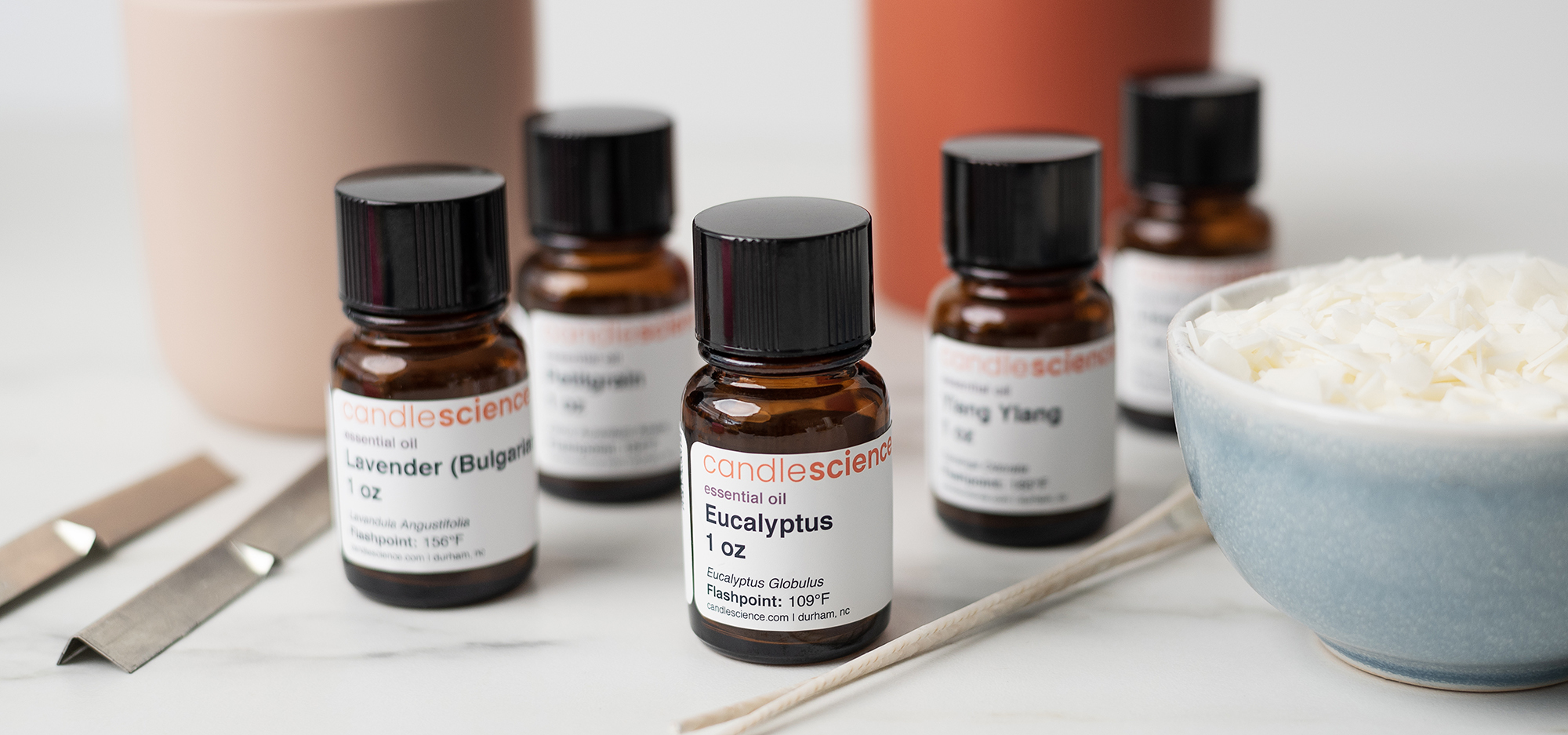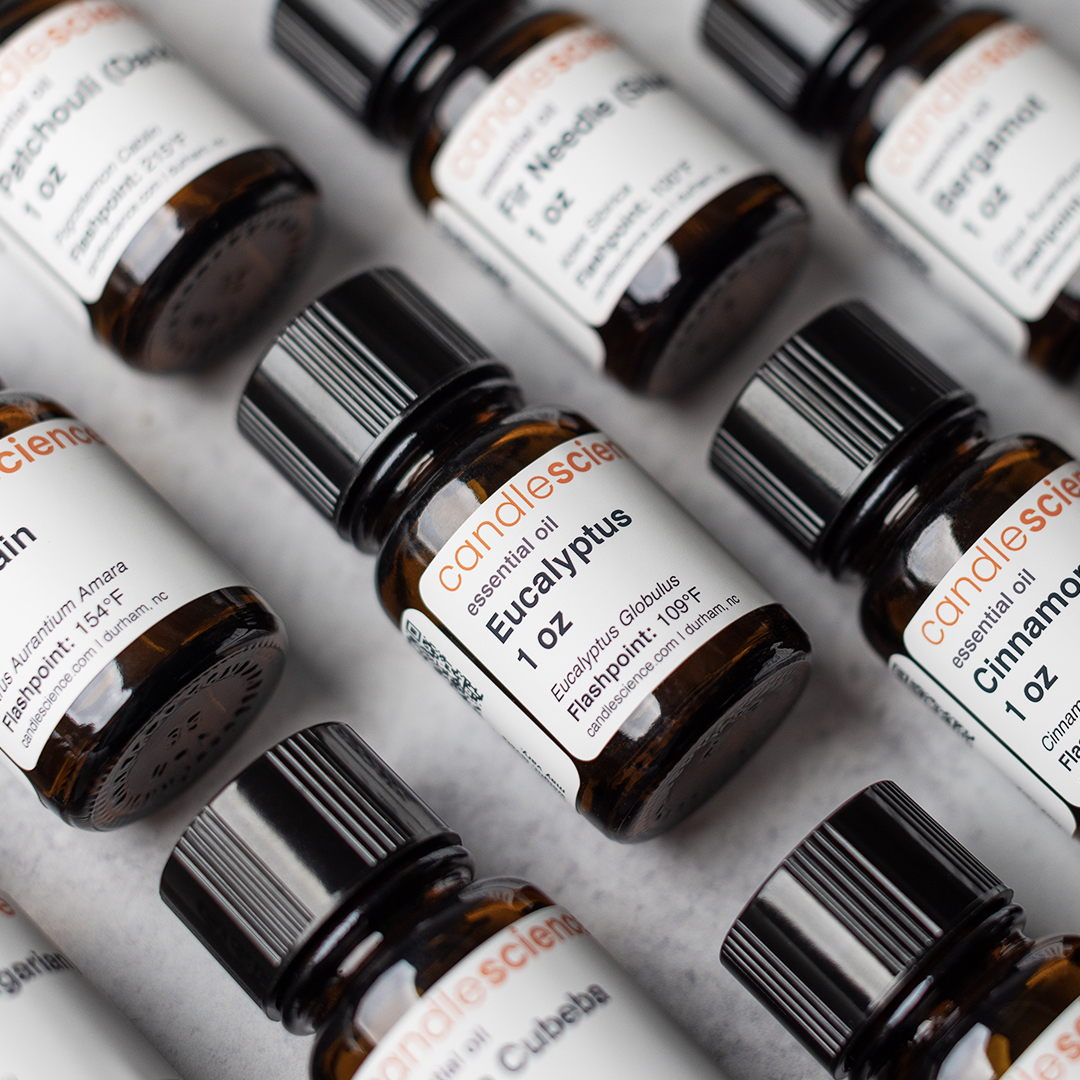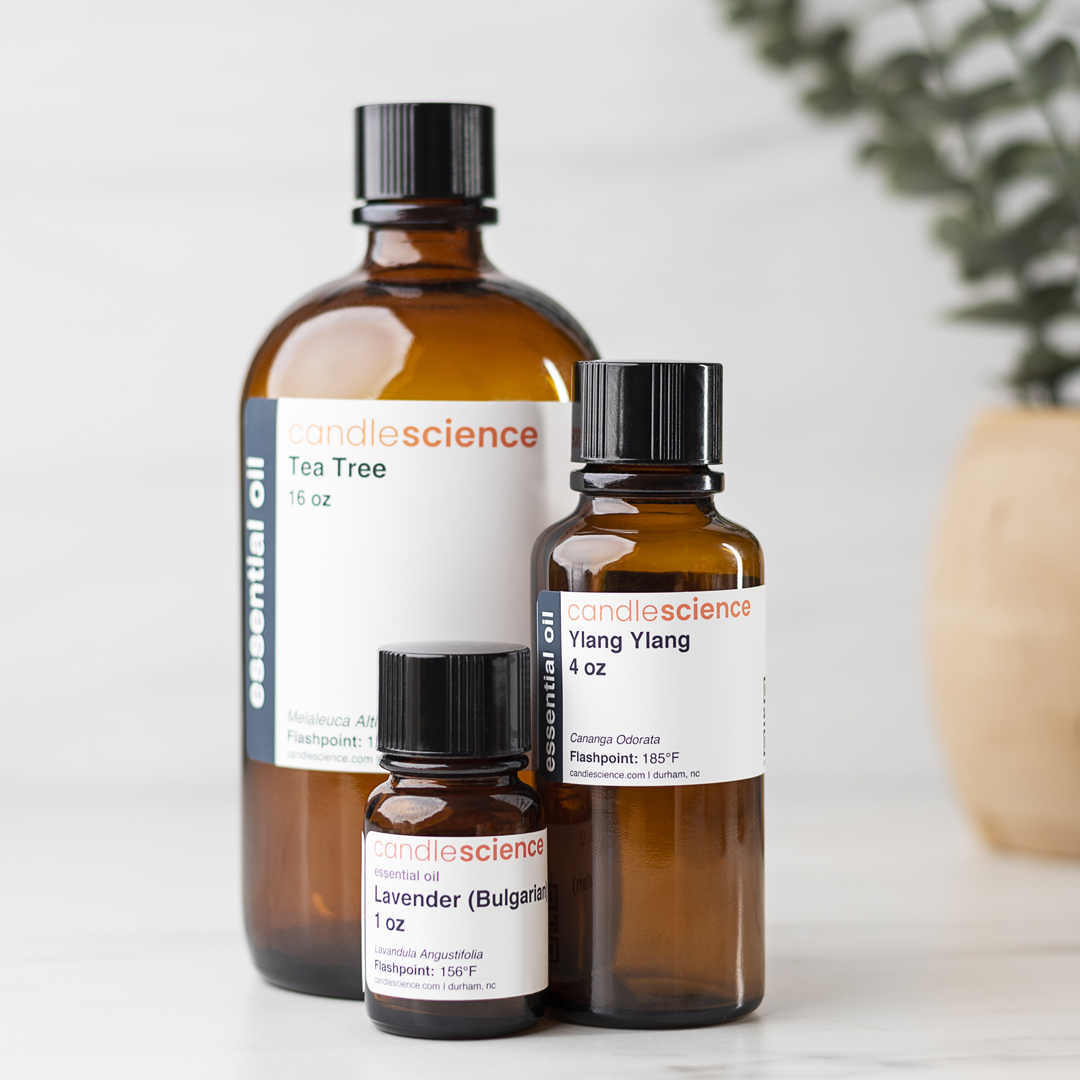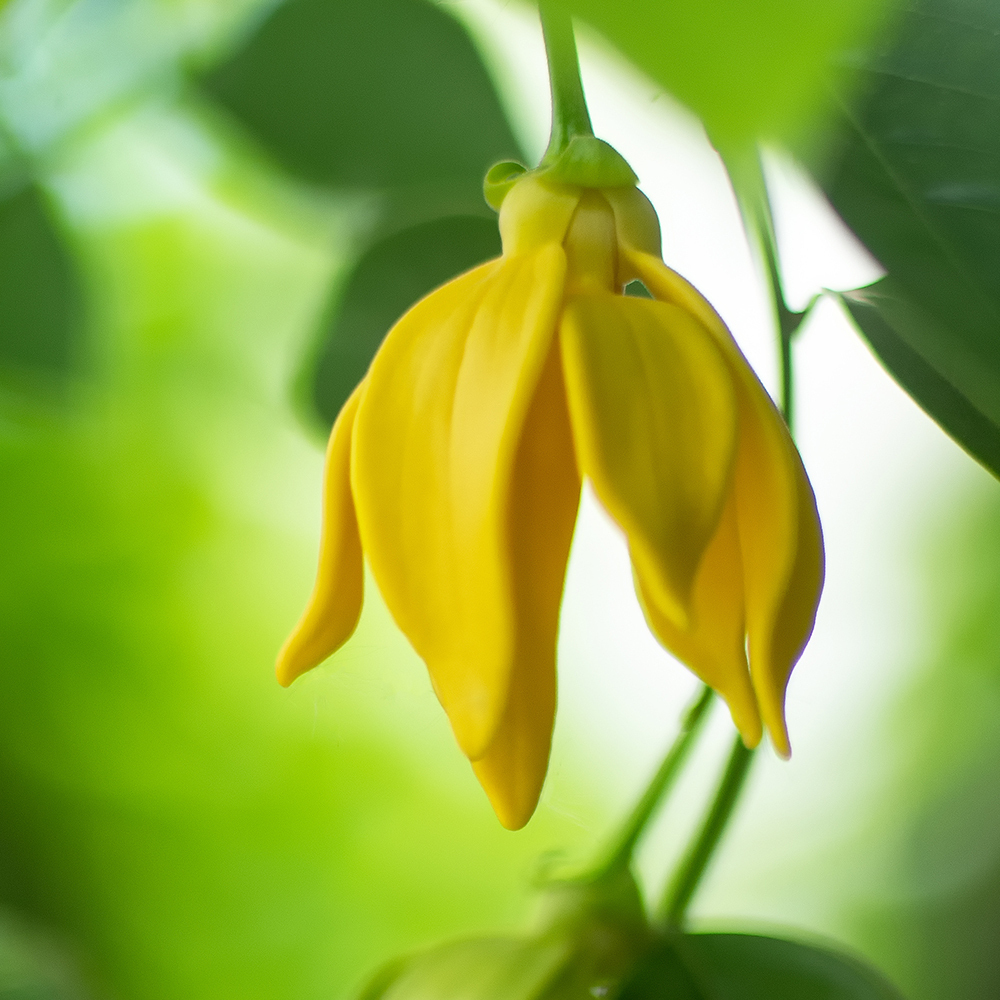best essential oils for beginner candle making Our top five picks for beginner-friendly essential oils, plus guidance on labeling naturally scented products.

Making candles with essential oils isn't only for seasoned candle makers. Essential oils are one of the best ways to naturally scent candles and body care products, but some are a little easier to work with than others.
Read on to discover the best beginner essential oils for candle making. Plus, learn how to describe your naturally scented products.
What to look for in essential oils for candle making
What makes an essential oil good for candles? We look for three factors: scent shift, hot throw, and soy wax performance.
- Some essential oils just don’t do well in candles because exposure to a flame causes their aroma to shift. These essential oils may still be great candidates for wax melts and other products, but using them in candles will only lead to frustration…and potentially upturned noses!
- Hot throw is important to a lot of candle lovers. We want to be able to smell that beautiful, natural scent when the candle’s burning! Some essential oils have a surprisingly strong hot throw, making them great for beginners and seasoned candle makers alike.
- Natural, plant-based waxes are the, well, natural choice for candles scented with essential oils. Since soy wax is notoriously tricky for hot throw, soy performance is a great metric to consider when selecting essential oils for candles. If an essential oil does well in soy wax, you can assume it’s likely to perform well in others, too.
What are the best essential oils for candle making? These five essential oils are perfect for candle making beginners thanks to their impressive hot throw, soy wax compatibility, and steadfast aroma while burning.
Lavender (Bulgarian)
Bulgarian Lavender is what most folks think of when they think of Lavender; aromatic, earthy, floral, and herbaceous. This essential oil is one of the most popular choices on the market!
If you’re unsure where to start when selecting essential oils, let Lavender lead the way. All-natural Lavender candles do well in any collection, but they’re almost sure to be best sellers at farmer’s markets and handmade craft fairs.
Recommended candle usage: 3-6%
Candle branding keywords: calming, soothing, relaxing
Shop and see details: Lavender (Bulgarian) essential oil
Litsea Cubeba
You may not have heard of Litsea Cubeba, but it’ll be one of your go-tos if you give it a try! Litsea Cubeba essential oil smells like green, grassy lemon. Also known as May Chang, this essential oil is the perfect option for those who want to make an all-natural, lemon-fresh candle.
Why not just use lemon, though? Lemon essential oil can be difficult to work with when it comes to candle making; it has a mild hot throw and using too much can produce an unpleasant scent shift. Litsea Cubeba, though, is beginner-friendly and has a strong hot throw that highlights lemon accords.
Recommended candle usage: 3-6%
Candle branding keywords: uplifting, energizing, vibrant, lemony
Shop and see details: Litsea Cubeba essential oil
Petitgrain

Petitgrain is to orange as Litsea Cubeba is to lemon. Derived from the twigs and leaves of the bitter orange tree, Petitgrain’s orange citrus quality is accompanied by green, floral aromas. Sweet Orange doesn’t behave well in candles, but Petitgrain is a top performer!
The green character of this essential oil is a bit more forward than the orange citrus scent, and the out-of-bottle aroma carries through to the cold and hot throw.
Recommended candle usage: 6-9%
Candle branding keywords: calming, mindful, grounding
Shop and see details: Petitgrain essential oil
Ylang Ylang
Oh, elegant Ylang Ylang (pronounced ee-lang ee-lang) essential oil! Mother Nature is showing off with this sophisticated scent.
Floral, rich, and bright, Ylang Ylang essential oil candles are showstoppers that will have your customers wondering how a singular, all-natural essential oil can smell so profound. With a hot throw that's true to the out-of-bottle aroma, this essential oil is the perfect introduction to all-natural candles.
Recommended candle usage: 3-6%
Candle branding keywords: calming, grounding, uplifting
Shop and see details: Ylang Ylang essential oil
Eucalyptus essential oil
Florists and interior designers utilize eucalyptus for its calm spa vibes, so it’s no surprise that this is one of the most beloved essential oils for turning your bathroom into a self-care sanctuary.
Eucalyptus essential oil is unmistakable with its invigorating, almost cooling quality. Eucalyptus essential oil candles smell camphorous, sweet, and slightly woody; they also tend to have a cold throw that’s just as impressive as the hot throw, so you’ll get a whiff of relaxation every time you walk by!
Recommended candle usage: 6%
Candle branding keywords: refreshing, invigorating, relaxing, calming
Shop and see details: Eucalyptus essential oil
Labeling essential oil candles and naturally scented products
What exactly does the term "naturally scented" mean? While it may sound straightforward, it's sometimes misused. Let's discuss how you can use this term and when you should promote your products from a different angle.
The "naturally scented" claim applies to products that are fragranced exclusively with natural materials. A consumer should be able to safely assume that synthetic fragrances are not included in the product if it claims to be naturally scented.
Because this article discusses essential oil candles, we'll focus on essential oils below; however, other naturally scented products may use distillates (hydrosols), oleoresins, and natural isolates.
Terms you can use to promote essential oil candles:
- Scented with natural essential oils
- Made with 100% naturally derived scents
- Fragranced with pure essential oils
What if the product contains both essential oils and fragrance oils?
You can still promote the use of natural essential oil in that beautiful candle you made with a blend of Lavender (Bulgarian) and White Oak and Vanilla!
Many fragrance products include both synthetic and natural materials. If they contain synthetic materials, they can no longer claim to be all natural or naturally scented; but you can still call out the natural ingredients!
A few popular ways to highlight products with natural components:
- Infused with
- Contains
- Enhanced/enriched with
- Features/includes
- Made with
Be clear and transparent in how you describe your products, whether all natural or not. The goal is to inform customers of the natural essential oils in your products without misleading them or being dishonest.
We could make the following claims about the Lavender (Bulgarian) and White Oak Vanilla candle mentioned above:
- Scented candle infused with natural Lavender (Bulgarian) essential oil
- Handmade candle enhanced with pure Lavender (Bulgarian) essential oil
- Artisan candle made with natural Lavender (Bulgarian) essential oil and premium fragrance oil
For more information about marketing your products according to U.S. regulations, check out our comprehensive guide: Cosmetic, Soap, or Drug: Intended Use and Product Classifications.

Essential oil FAQs
Answers to common essential oil questions.

How to make soy candles with essential oils
Learn how to make soy essential oil candles.

Browse CandleScience essential oils for candles
Discover premium essential oils for candles and melts.



